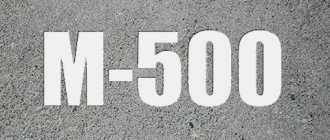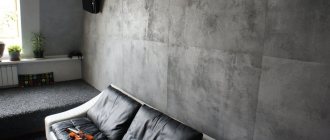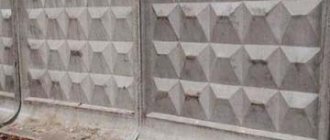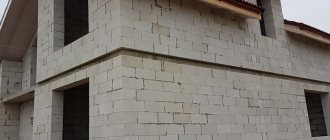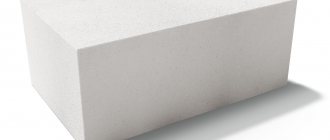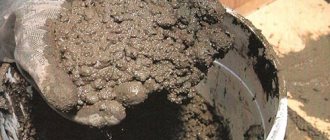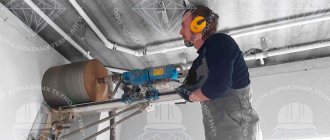Self-healing concrete is the general name for various modern developments and innovative solutions designed to change the structure of the material and make it capable of restoration and resistance to various influences. Due to the fact that concrete today is one of the most in demand and popular materials in the repair and construction industry, the search for new production methods is more relevant than ever.
Every year, up to 10 billion tons of concrete solution are produced in the world. Despite some disadvantages, it is not yet possible to replace concrete with a material with the same advantages and technical characteristics. Therefore, scientists around the world are constantly conducting research and experiments in attempts to level out such disadvantages of concrete as shrinkage, the likelihood of cracks and deformations spreading, instability to external influences, etc.
The main direction of modern developments is the search for self-healing, flexible concrete that will effectively resist deformation and be able to recover under any influence.
Characteristics and purpose of the new building material
Self-healing concrete is a new stage in the development of building materials. According to GOST 25192-2012, GOST 7473-2010, GOST R 57345-2016, GOST R 57359-2016, the production of concrete defines: composition, structure, hardening conditions, and so on [1-4]. The new self-healing concrete differs from classical recipes by adding fungi and bacterial spores to the composition, which can survive in alkaline conditions and give the building material new properties. During their life, bacteria produce substances that restore the damaged surface of a concrete structure.
It is a known fact that concrete dries out over time, becoming covered with cracks into which water penetrates, and with it microorganisms that begin the corrosion process. As a result of such destruction, expensive repairs to the concrete structure are required. Fungi and bacterial spores added to the composition can remain dormant for decades. As soon as the structure becomes cracked and water penetrates into them, microorganisms become active and begin to produce calcium carbonate (limestone), filling the cracks in the concrete with this material. This self-healing process extends the life of the concrete structure.
Solving the problem the old fashioned way
Bending test on concrete specimen
Every first-year student of any construction or construction-related educational institution knows: concrete cannot withstand serious bending loads, no matter how you select its composition, and what superplasticizers you do not add. As a rule, the flexural strength of concrete of any grade at 28 days of age is less than the compressive strength by 8 or even 10 times. This drawback manifests itself in the form of cracks in the lower part of any concrete product, and as a result, its early destruction.
To prevent the manifestation of this property, for more than 100 years concrete has been reinforced with special frames located at the bottom of the product. The reinforcement takes on tensile loads, increasing the durability of concrete and its ability to resist bending loads.
But all this is lyricism, compared to what the reinforcement provides, except for resistance to destruction under the influence of bending moments.
This:
- an increase in the weight of the structure, and accordingly the load on the base increases, which also requires additional reinforcement;
- labor intensity of work;
- corrosion of metal in a concrete body, as one of the reasons for reducing its service life;
- The costs of metal are significant, as are the services of specialists working with them.
We can say that we have come to terms with such shortcomings. Additional calculations and tolerances are made. In principle, the entire well-functioning construction mechanism in our country is built on reinforcement. Innovators look at the world differently - including the role of reinforcement in concrete. Some make it out of plastic, others try to eliminate it altogether...
Methods for producing self-healing concrete with bacteria
The first line is a control sample;
the second is T. reesei spores; third - Aspergillus nidulans [8] Several methods are used to obtain self-healing concrete:
Delft University of Technology, the Netherlands [7]
Microbiologist Hank Jonkers proposed adding bacteria of the genus Bacillus to concrete. The bacteria are placed in a concrete mixture in biodegradable capsules along with calcium lactate. As soon as water begins to enter the cracks on the surface of the concrete, the biodegradable capsule dissolves, and the bacteria, when activated, begin to produce limestone, which fills the cracks in the building material. Calcium lactate is used as a nutrient medium for bacteria of the genus Bacillus.
Binghamton University, New York State and Rutgers University [8]
A team of scientists from two universities added spores of the fungus Trichoderma reesei to the concrete mixture [9]. After cracks began to appear on the surface of the building material, water and air provoked the fungus to actively germinate, producing calcium carbonate, which firmly sealed the resulting damage.
Other self-healing technologies
By developing the properties of building materials and increasing their economic benefits, in contrast to building codes and regulations (SNiP 82-02-95, SNiP 82-01-95), regulating the consumption of cement in the production of concrete and reinforced concrete products, domestic and world sciences have gone beyond the approved standards of rules, application of discoveries in biology and microbiology [5, 6].
Sevastopol State university
A group of university scientists has developed nanopowder technology with the addition of bacterial strains. The ingredient added to the concrete mixture strengthens the concrete block under compression by 94%. This building material is intended to be used in hydraulic engineering and bank protection construction.
University of Michigan, USA [10]
Scientists Yingzi Yang and Victor Li, drawing on the idea from the natural growth and self-healing properties of seashells, achieved that with prolonged contact of self-healing concrete with water, the resulting cracks are healed, filling with calcium carbonate.
University of Victoria, British Columbia
Scientists have developed a plastic cement composite using a polymer in its composition, which gave concrete the ability to withstand vibrations of up to 12 points on the Mercalli scale.
Nitrifying bacteria
Bacteria grow in simple mineral environments in soil and water bodies. Specific microorganisms develop well in a liquid environment. Nitrification is the process of converting nitrogen-containing compounds into nitrites and then into nitrates.
Research shows that nitrifying bacteria, along with ammonifying bacteria and fungi, are involved in the corrosion of concrete products, especially underground structures, sewers, and so on.
How to make flexible concrete yourself
The process is a layer-by-layer laying of mortar components and fiber optic threads with surface treatment of the product after the concrete mixture has hardened. To prepare a transparent product you will need the following components:
- Portland cement grade no less than M300;
- aggregate (quartz sand, marble or granite chips) fraction size 2-3 mm;
- optical fiber with a cross section of 0.25-05 mm;
- plasticizers, hardening retarders.
The mixture is prepared in a volumetric ratio: 1 part cement, three parts aggregate, 0.5 parts water. Plasticizers - as specified by the manufacturer's instructions.
To achieve high quality, the components are mixed until the composition is completely homogeneous. The prepared mixture should be mobile, but not separate. In order not to reduce the quality characteristics of concrete, the amount of introduced optical fiber should not exceed 5% of the total volume.
- We pour a thin layer of liquid concrete mixture into the finished formwork, into which we lay a layer of fiber optics strictly in one direction.
- After setting, pour a thin layer of the mixture again and lay the optical fiber. Due to the fact that compaction of the mixture cannot be done so as not to damage the optical fiber, it is necessary to use a plasticizer for the mobility of the mixture.
- The further process consists of layer-by-layer laying of the solution components and fiber optic threads until the required dimensions of the product are achieved.
- After the solution has completely set, the formwork can be removed.
On average, the gain of mechanical strength under normal conditions will be 7 days. Then you can begin processing the surface of the product. The surface is polished perpendicular to the cross-section of the laid fibers. In order for the light, falling on the end of the conductor, to be reflected, and, repeatedly refracted at bends, to exit through the other end of the fiber.
Pros and cons of self-healing concrete
Microscopic image of T. ressei with a magnification of x1000, showing that the spores grow equally well both with and without concrete [8]
Concrete is a building material that, in its liquid state, has the fluidity of water, which makes it possible to pour cement mortar into any shape and niches.
In its hardened state, concrete has the hardness of stone, which makes it indispensable in the construction of large objects (bridges, high-rise buildings, dams, etc.). Moisture, temperature changes, exposure to chemicals, and corrosion have a destructive effect on concrete; over time, the material tends to dry out. Self-healing concrete is more resistant to external destructive factors and has self-healing properties.
“Abandon reinforcement,” are you kidding?
The photo shows two samples of ordinary and flexible concrete under pressure with bending loads of the same magnitude
The creators of ConFlexPave concrete aim to completely replace bulky rebar with their ultra-light and incredibly strong fiberglass. To date, developments in this area are still underway. So far, only photos and part of the test results of a sample of flexible concrete have been made public.
The result is stunning. The strength of concrete with fiber in both compression and tension is almost the same and is almost 3 times greater than that of a conventional sample with a similar design grade of mortar.
According to the developer of flexible concrete, they created their creation primarily to increase the service life of concrete road surfaces. In addition, such a development will reduce their thickness and installation speed. In addition, flexible concrete will be a salvation not only during road work.
Its properties were taken into account for the development of earthquake-resistant monolithic buildings and structures. It’s hard to even imagine what kind of revolution such a development will make in the field of reinforced concrete manufacturing, in due time, of course, when we are ready for it...
Areas of use
Concrete is a durable building material that has the necessary properties for the construction of both large structures (bridges, overpasses, dams at hydroelectric power stations, etc.) and small construction products (curbs, street lighting masts, reinforced concrete fences, etc.).
New self-healing material is needed in places where minor repair work and regular inspection of the condition of structures is impossible:
- underground construction;
- underwater construction;
- high-rise buildings;
- bridge-type transport structures.
Another advantage of new generation building materials is the possibility of saving budget funds, since there is no need for constant minor repairs of structures. Money regularly allocated for these purposes can be used for the construction of new facilities.
Information sources:
- GOST 25192-2012
- GOST 7473-2010
- GOST R 57345-2016/EN 206-1:2013
- GOST R 57359-2016/EN 13670:2009
- SNiP 82-02-95 (introduced 01/07/1996)
- SNiP 82-01-95 (introduced 01/01/1996)
- Bacteria-based self-healing concrete – HM Jonkers, 2011.
- Interactions of fungi with concrete: Significant importance for bio-based self-healing concrete – Luo J, Chen H, et al (published 2022).
- Using fungi to fix bridges – Binghamton University (published 01/2018).
- Autogenous healing of engineered cementitious composites under wet–dry cycles – Yingzi Yang, Victor C. Li (published May 2009).
Characteristics of elastomer concrete
The material does not break into pieces like glass. Under high compression loads, it only bends. The resulting microcracks do not lead to further destruction, as in conventional structures. The reason for this strength is special additives. They are intended for pouring floors on an industrial scale. This is a finishing coating that does not require additional leveling or impregnation. An elastic material is also used in the manufacture of colored mosaics on floors - terrazzo. Different shades and patterns combine perfectly here.
The main property of concrete is maintaining the integrity of the structure when various types of loads occur. The appearance of voids causes gradual destruction of the product. Therefore, when introducing special components, this technical characteristic should not be deteriorated. On the contrary, they improve the adhesion of various substances between themselves and the reinforcing elements. Additives reduce the size of possible cavities, increasing the service life of products, improving strength data and reducing the moisture permeability of the hardened mass.
Technology for manufacturing and applying polymer concrete
To produce polymer concrete, you will need the following protective equipment, tools and mixing containers:
- electric drill or screwdriver with attachments,
- scales for determining the ratio of components,
- containers for mixing and preparing components,
- protective equipment for hands and face.
The polymer coating is prepared at home according to the following algorithm.
- We clean the filler of the coarse fraction of crushed stone from contaminants, dry it at a temperature of 110 degrees and cool it. The moisture content of the resulting mixture should not exceed 1%.
- Mix the filler with sifted sand.
- Load the components into the mixer for 2 minutes and add filler (graphite, andesite, quartz). After the mixing process, you can pour water and start the mixer again.
Separately prepare the binder.
- We soften the selected ash (binder) by heating to 35–40°C or a special solvent. It is important not to forget that the amount of polymers in the mixture should be no more than 20% by weight of cement. If you used water-soluble resins, then they are introduced into the solution in small doses, and their amount does not exceed 2% by weight of the cement.
- Add the plasticizer and stabilizer, stir for 2 minutes and pour the hardener into the composition.
- If necessary, add synthetic dye.
- Combine with fillers and mix for 3 minutes - polymer concrete is ready for pouring.
Tip: do not try to make a large amount of material at once, as the mixture hardens quickly.
If you are planning to pour it into a specific form, then prepare everything you need in advance.
- We cover the surface of the mold with paraffin (you can use technical petroleum jelly or machine oil), this way you will avoid sticking of the polymer concrete.
- Pour the concentrate into the mold, trying to fill the entire density as much as possible and remove air bubbles from the mixture. Compaction can be done using a vibrating table or a mounted vibrator.
- You can remove the finished form no earlier than 24 hours, and if the composition contains a large amount of hardener, then you can remove it earlier.
Tip: cleaning the concrete mixer or mixer immediately after finishing work is mandatory, since the remaining material hardens quickly and is difficult to wash out.
Experienced builders recommend using polyamide and epoxy resins in combination with a polyethylene-polyamine hardener. It is believed that these components provide the highest quality polymer concrete.
Glowing concrete
Dr. Jose Carlos Rubio from Mexico's UMSNH University has created a cement that can be used to make glowing concrete. Concrete with photoluminescence can store solar energy during the day and then release it at night for 12 hours. The inventor claims that the strength of such concrete will be enough for 100 years of use.
If Rubio's cement passes the necessary tests, walls, buildings, and even roads made from it (in climates that allow it) will be able to store light energy during the day and then glow at night, thus saving enormous amounts of electricity.
Rubio says that unlike photoluminescent plastics, which degrade when exposed to ultraviolet light, his cement is sun-resistant and can last as long as a hundred years. He has already received material in two colors, blue and green. Among other things, the maximum brightness of the material can be controlled during its manufacture - so that, for example, a luminous road does not blind drivers.
The inventor patented his cement in Mexico. The Newton Foundation, founded by the Royal Academy of Engineering in Great Britain, has already become interested in the invention. The project is going through the commercialization stage.
Types of elastomer concrete
In practice, several types of material are used, differing in properties and nature of action: • plasticizers; • anti-frost; • modifiers; • retarders; • hardeners; • substances for self-leveling surfaces.
Elastic properties are imparted to the cement composition by special additives - plasticizers. They are based on polymer components that are added to dry mixtures and liquid concrete solutions. This is done in order to obtain the desired fluidity, moisture absorption, and plasticity. At the same time, they should be odorless, mix well with the main substance - cement, be resistant to solvents, and have a minimum level of volatility.
Important! Plasticizers increase the strength of cement mortar after its final hardening. In addition to providing elasticity, they reduce the mass of the solution. For example, a floor with such a concrete screed weighs less. Consequently, the load on the supports is also reduced.
Electrically conductive concrete
Russian scientists from the Far Eastern Federal University (FEFU) have created electrically conductive concrete.
It can be used for special construction, automatic monitoring of deformations and repair of structures, production of anti-freeze runways, road surfaces, as well as surfaces from which electric cars and other equipment will be recharged on the go. An article about this was published in the Magazine of Civil Engineering.
Based on the results of the tests, it was recorded that the new concrete not only can conduct electricity, but is also 30-35 percent stronger than GOST samples. Part of the cement in the new concrete was replaced with ash and slag waste from energy production and granite processing waste, so its production is more economical and environmentally friendly than conventional concrete and existing analogues. For electrical conductivity, instead of expensive carbon nanotubes, ordinary and very affordable carbon nanoparticles were added to the mixture.
Read more about electrically conductive concrete in the article “Why do we need electrically conductive concrete”
Types of Supplements and Their Benefits
It is worth noting that there are three types of modifying additives (popularly they are often called “elastic concrete”), each of them is designated by a letter, so understanding their features will not be difficult.
Type A
Elastic concrete A is used to increase the strength characteristics of concrete material and improve a number of properties:
| Strength | Compared to conventional concrete, performance increases by 70-110% |
| Impact resistance | Increases 2-3 times |
| Waterproof | The surface practically does not absorb water |
| Frost resistance | Work can be carried out at temperatures down to -5 degrees |
| Duration of strength development | 8 days (with a normal period of 28 days) |
Thanks to the use of the additive, it is possible to reduce the layer thickness to 4 cm and eliminate such an expensive and labor-intensive process as reinforcement. When doing the work yourself, the process is much faster, since surface treatment (topping) is not required to increase strength.
It is best to level the surface with a special device that can be rented.
The use of this option is very convenient for the following reasons:
- No surface treatment required.
- Finishing can be done in various ways: smoothing, grinding, polishing, using various varnishes and impregnations.
Advice! For surface dust removal, a special polymer-based impregnation (sealer) is best suited.
Type B
Elastic concrete B is distinguished by unsurpassed indicators of reliability and practicality:
- Strength indicators, depending on the type of filler used, can range from M600 to M1200, which allows the use of such floors in industry and mechanical engineering.
Coatings in industrial premises must meet the highest reliability requirements
- It is very easy to use the additive, the instructions themselves are quite simple - for 100 kg of cement you need 20 liters of solution and thorough mixing.
- The cost of the project is reduced due to the fact that the minimum layer is only 15 mm, at moderate loads - 20 mm, at heavy loads - 30 mm.
- The floor can be used after just 5-6 days.
Type B
Elastic concrete B has a number of properties that make it almost unique:
- The minimum coating thickness is only 4 mm, the recommended thickness is from 5 to 8 mm; if the surface is subjected to significant loads, then the layer should be from 8 to 15 mm.
- The resulting strength varies between M400-M500.
- The work is extremely simple; the solution is prepared on site and mixed with a construction mixer.
- The highest wear resistance allows the use of coatings of this type in administrative buildings, shopping centers and other places with high traffic.
- Can be used both indoors and outdoors.
Even a thin layer provides excellent strength
High-quality concrete for crafts with professional additives
Judging by the reviews and letters from readers, there is great interest in using professional ingredients in concrete crafts.
You can add different fibers to those listed earlier. The most commonly used are polypropylene.
As a result, the strength of the product increases significantly. Reduces runoff from vertical surfaces. Hairs protruding from the finished product can be easily removed with a hairdryer or gas torch.
If concrete for crafts, in addition to modeling, must be used for high-quality casting, then you cannot do without a modern plasticizer.
Fourth generation hyperplasticizers make it possible to produce thin-walled, durable products. For example, brick-like tiles made of fine-grained concrete. White cement also helped with this.
The same similar composition is used in the manufacture of the hollow angel.
It is spin-cast in a previously made silicone mold. The process is similar to plaster casting.
A little-known additive is white soot. In its activity it is similar to microsilica and metakaolin. And according to other characteristics on the EC.
One more of its properties is most noteworthy. It helps to retain pigment in the mass. It doesn't wash out. This allows you to increase the dose of pigment. The result is a brighter color.
In addition to the positive properties: white soot protects the solution from delamination.
